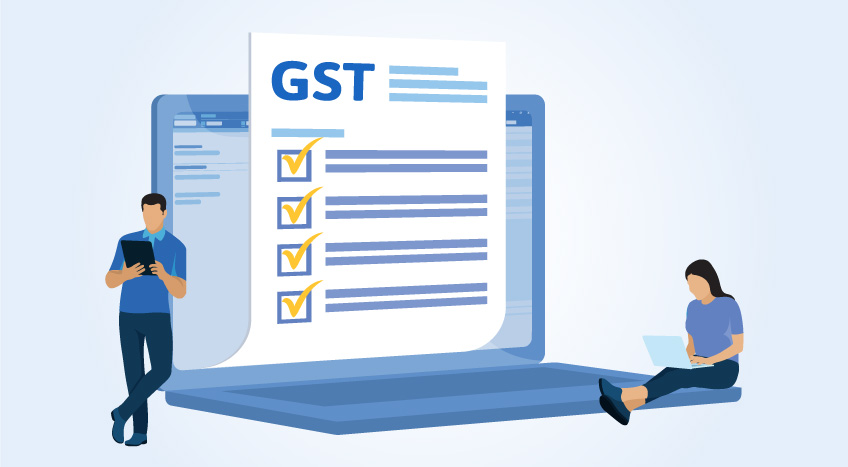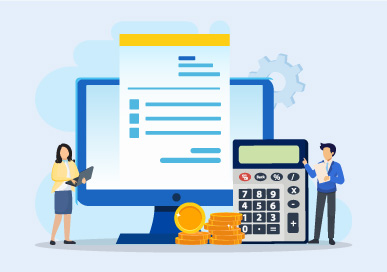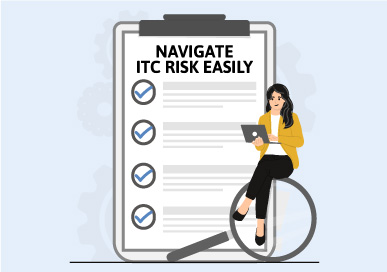The e-Way bill is an important document under the Goods and Services Tax (GST) system in India, which must be generated whenever goods are transported from one place to another. It ensures that the movement of shipment is legitimate, and it helps prevent tax evasion. However, generating an e-Way bill is not always as simple as it seems. Small mistakes in the document can cause major problems, including delays in delivery and penalties. Businesses must ensure that all information entered is accurate and latest to avoid such problems.
In this article, we’ll look at the most common mistakes people make while generating an e-Way bill and how to avoid them, so you can ensure smooth transportation of goods.
Key mistakes to avoid when generating an e-Way bill
While generating an e-Way bill may seem easy, there are some common mistakes that many businesses often make. These errors can result in invalidation of the document and affect the delivery. Knowing the common mistakes and how to avoid them can save you time and trouble during the transportation process.
Let’s look at some of the errors that occur when generating an e-Way bill and how you can deal with them:
Incorrect document details
One of the most common mistakes is entering the wrong details in the e-Way bill. This can include incorrect invoice numbers, dates, or even invoice amounts. If the document details do not match the physical invoice or the GST return during the inspection, it can cause delays in the shipment, or you might even be penalised.
How to avoid:
To prevent this, always double-check the invoice number, invoice date, and the amount before generating the e-Way bill. If you use accounting software, like TallyPrime, it can automatically fetch the correct invoice details, reducing the chances of manual mistakes. It’s also helpful to make sure the details match the records you’ve filed for GST returns, ensuring everything is consistent.
Wrong or incomplete HSN codes
The HSN (Harmonised System of Nomenclature) code is a standardised code that identifies the type of goods you’re transporting. An incomplete or wrong HSN code can lead to incorrect tax rates being applied to your products, which might cause issues with tax authorities. Additionally, if the code doesn’t match the item correctly, the e-Way bill might be rejected altogether.
How to avoid:
Make sure you have the correct HSN codes for all your goods. The easiest way to ensure accuracy is by maintaining a list of valid HSN codes for each product you sell. If you’re using accounting software, it can automatically fill in the correct codes for each item based on the data you’ve entered, reducing the risk of mistakes.
Entering an invalid transporter ID or vehicle number
The transporter ID and vehicle number are essential fields in the e-Way bill. If either of these details is incorrect, the document will be invalid, causing delays in shipping or even penalties. Sometimes businesses might make a mistake in typing the transporter ID or vehicle number, or they may enter an outdated or incorrect registration number.
How to avoid:
Before generating the e-Way bill, always double-check the transporter details. If you frequently use the same shipper, it’s better to save their Transporter ID in your software, so you don’t need to manually enter it every time. Also, ensure the vehicle number you enter matches the actual cargo carrier used for transportation. Cross-check with the driver or transporter if necessary.
Wrong distance and validity calculation
The validity of the e-Way bill is determined by the distance between the origin and destination. If the distance is entered incorrectly, it can either lead to the document expiring too soon or staying valid for longer than necessary. This discrepancy can cause compliance issues, especially if the goods take longer than expected to arrive and the e-Way bill expires before delivery is completed.
How to avoid:
It’s important to calculate the correct distance between the consignor and consignee’s locations. Tools like Google Maps can help you easily determine the distance. Many accounting software also auto-calculate the miles based on addresses you enter, making it easier to ensure the validity period is correct.
Choosing the wrong document type
Different types of documents are used for different types of goods movement. For example, an invoice is used for sales, a delivery challan is used for stock transfers, and a bill of supply is used when you don’t charge tax. Choosing the wrong document type can result in an invalid e-Way bill and cause confusion.
How to avoid:
Make sure you select the correct document type for the goods movement. Take a moment to check the purpose of the shipment, is it a sale, stock transfer, or something else? Knowing the right document type to choose will help ensure compliance and avoid mistakes.
Generating e-Way bills for exempted goods
Some goods are exempt from the requirement of an e-Way bill. These might include certain types of agricultural products or other items that fall under the exemptions list. Generating an e-Way bill for these goods is not required and can lead to unnecessary paperwork and confusion.
How to avoid:
Keep a checklist of excluded items and always check the latest list of exempted goods on the GST portal to ensure you’re not generating e-Way bills for products that don't require one.
Missing updates in part B (Vehicle details)
Part B of the e-Way bill requires vehicle information such as its registration number and transport details. If this part is not filled or updated correctly, the document may not be valid.
How to avoid:
Always update the vehicle information in Part B before generating the e-Way bill. If you don’t know the details at the time of the document generation, ensure you update them before the goods start moving.
Delays in cancellation or extending validity
If your consignment is delayed or the goods aren't moved at all, you must cancel or extend the validity of the e-Way bill. Failing to do this in the allowed time frame can lead to the document being invalid, which could cause the goods to be stopped during transportation.
How to avoid:
Set reminders to cancel or extend the e-Way bill in case of delays.
Mismatched consignee/consignor details
Mismatched details of the consignee (recipient) and the consignor (sender) can cause issues during inspections. This information must match the one on the invoice, or the goods may be held up for verification.
How to avoid:
Double-check the consignee and consignor details, including GSTINs, names, and addresses.
Using expired or cancelled GSTIN
If the GSTIN of the consignor or consignee has expired or been cancelled, the e-Way bill will not be valid. Using an incorrect or inactive identifier can lead to penalties or delays in transit.
How to avoid:
Ensure that the GSTINs you are using are active and valid. Regularly check and update them in your accounting software to avoid using expired or cancelled numbers.
Best practices to avoid these mistakes
Now that we’ve seen the common mistakes in e-Way bill generation, it’s important to know how to avoid them. A few simple habits and the right tools can help you save time, avoid penalties, and keep your goods moving without any problem. Here are some easy and useful tips to help you generate e-Way bills correctly:
- Use trusted software instead of entering details manually. This reduces the chances of mistakes.
- Train your staff on how to create e-Way bills correctly. When your team understands the process, they’re less likely to make mistakes.
- Always double-check details before submitting the e-Way bill. Taking a few extra seconds to review can save you from bigger problems later.
- Use auto-fill features in your software. These pull information directly from your invoices and reduce manual typing mistakes.
- Create a checklist to follow every time you generate an e-Way bill. This helps make sure you don’t miss any important steps.
How TallyPrime helps you avoid e-Way billing mistakes?
TallyPrime makes e-Way bill generation simple, fast, and error-free. Here's how:
- Auto-validation of data before generation: TallyPrime automatically checks all fields for mistakes before generating the e-Way bill.
- Seamless e-Way bill generation from within TallyPrime: You don’t need to log in to the GST portal separately. Generate e-Way bills directly while creating your invoices in TallyPrime.
- Alerts for expiry and missing information: TallyPrime reminds you to fill in Part B, extend the bill if it's expiring, or cancel it on time. These alerts prevent last-minute stress.
- Bulk and automated e-Way bill options: For businesses dealing with multiple invoices daily, TallyPrime allows you to generate different e-Way bills in one go, saving time and reducing manual work.
Conclusion
Mistakes in e-Way bill generation can slow down your business and invite penalties. By being aware of the common errors and using automation tools like TallyPrime, you can follow all the rules and run your trade smoothly. So, be smart, stay updated, and stay compliant.

















